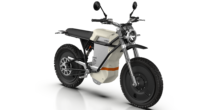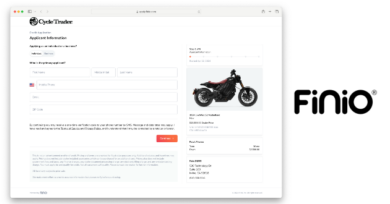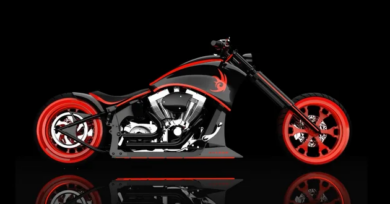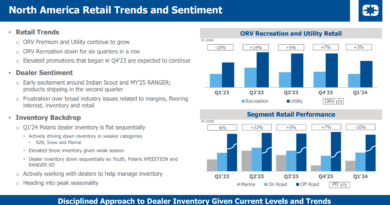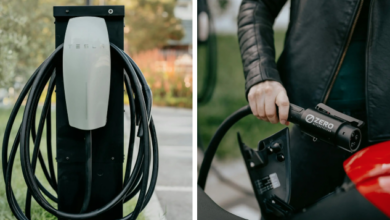Supply chain tips for motorcycle, ATV and UTV manufacturers—Part 1
 Powersports OEMs have developed unique purchasing cultures. The biggest ones are becoming more automotive-like every day while smaller OEMs sometimes lack experience or volume-purchasing power. Here are some tips for vehicle manufacturers to obtain a better return from their supply chain based on a couple of decades in roles on both sides of the negotiation table.
Powersports OEMs have developed unique purchasing cultures. The biggest ones are becoming more automotive-like every day while smaller OEMs sometimes lack experience or volume-purchasing power. Here are some tips for vehicle manufacturers to obtain a better return from their supply chain based on a couple of decades in roles on both sides of the negotiation table.
1) Seek gain, don’t just avoid pain
We fear what we don’t understand. But Commodity Managers need to be open-minded to new suppliers that could offer a strategic advantage for their employer. I recall being in some supplier discussions years back. The debate centered on “The Devil You Know” (who was clearly and measurably an inferior supplier) vs. “The Devil You Don’t Know” (a new supplier that seemed to have world-class capabilities and a powersports-specific division). In the end, the new supplier hit a home run but it was exceptionally difficult for them to even get a look. Seek gain prudently, even if there is some temporary pain.
2) Assess if a supplier is capable and structured to match the OEM’s needs
“Small” suppliers can be great if they continually reinvest in advanced designs, processes and equipment and you are in their target market, or awful if they develop a weakness in financial standing or if their talent level drops. “Large” suppliers can be great if they have a sales and engineering group strategically tasked with servicing powersports OEM-level accounts, or awful if they have a one-size-fits-all OEM account sales group. With the latter structure, the large supplier may be forced to devote resources to customers like automotive ones that bring in a half-million dollars a week instead of an ATV manufacturer that is invoiced a half-million dollars a year.
3) Strike a balance between competitiveness and relationship building
A great supply chain is based around a mix of great relationships and great cost structures. Neither factor typically succeeds alone. There is no disputing that if you’ve built a relationship with the right team, their people will overcome any obstacle they can to satisfy you as a customer. However, there can be profit or technology advantages left on the table by an OEM if the buyer starts playing favorites or anti-favorites when a key technology shift is overtaking an industry. An example of this might be a conversion from halogen headlights to LED headlights. Alternatively, if a buyer takes a hammer and nail approach with suppliers and never builds a legitimate relationship (and trust) with them, suppliers survive by playing a numbers game and they will not feel comfortable sharing their best ideas or even disclosing risks they and the OEM are jointly facing. This means undercutting and undervaluing to land the business followed by the OEM paying the real cost later via engineering change orders, price increases, line stoppages, warranty claims and recalls.
4) Don’t leave a flyer with a buyer
Some commodity managers evolve to have a responsibility split of 95/5 between one type of supply base such as cast and machined aluminum vendors, and an unrelated base such as electrical components. This is sometimes a leftover from a past reorganization, or a convenience because the two dissimilar components happen to mount to each other. The “flyer” will seldom get the attention or expertise it requires to be optimized for your supply chain. For example, there is a significant difference between how a stator (charging system) and a crank case are specified, designed, manufactured and tracked for Quality Assurance purposes. Even though they physically attach to each other, pairing these items in supply chain management might be a bad idea. Consolidate core process and technology types in the hands of buyers for best results.
5) Seek value not just the lowest price
Great companies master the art of creating value by knowing where to spend money and where to take cost out based on precise voice-of-customer information. In traditional supply chain environments, it is difficult to measure the cumulative effect of supplier intangibles on a company’s brand. These things include: great “little” improvements, domino improvements or faults caused in adjacent components, a blocky or unfinished appearance, Total Cost of Ownership, collaborative engineering, etc.
A good example is the value in a motorcycle starter motor. Better motor suppliers use precision-balanced armatures that are lighter and more durable instead of the wire-wound types with balancing epoxy added internally like wads of chewing gum. A great starter motor supplier can also influence the choice of batteries and cables, but none of this is usually rewarded by OEM supplier rating systems. Progressive snowmobile, UTV and motorcycle OEMs are trying harder to include part of their assessment of a supplier along the lines of total value.
However, a buyer whose job is solely measured on cost reductions, on-time delivery, etc. has little incentive to pay attention to anything outside of those boundaries. Therefore the total value concept has to be understood, supported and measured at the management level. General Motors’ key switch debacle is a negative example of how value can be disproportional to price. There are positive examples as well, “Wow” features like ergonomic handlebar controls and seats that offer a brand touch-point worth far more than what the OEM paid for them. A powerful supply chain is a competitive advantage, and maintaining one requires insight and decisiveness. Stay tuned for more tips on supply chain management in a future edition of powersportsbusiness.com
After leading electrical system designs at Polaris and Arctic Cat, powersports consultant Gary Gustafson now handles Powersports OEM account sales and new business development for lighting and electric motor suppliers. He also develops custom market research for other vendors entering this space. Learn more by visiting www.gforceconsulting.com



